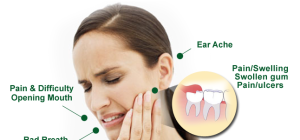 It’s natural for most people to never think about some things unless either they are interested in them for some reason, or they find themselves in a situation where they have to deal with them. In this instance, the thing of interest is a butterfly-shaped gland found at the front of the neck; the thyroid. Medical students, doctors (the real doctors – those who did medicine in various disciplines), and hypochondriacs are probably familiar with this gland, but there’s a good chance that the individual reading this article may not necessarily be conversant with it, and its significance; therefore, let’s unravel its mysteries.
It’s natural for most people to never think about some things unless either they are interested in them for some reason, or they find themselves in a situation where they have to deal with them. In this instance, the thing of interest is a butterfly-shaped gland found at the front of the neck; the thyroid. Medical students, doctors (the real doctors – those who did medicine in various disciplines), and hypochondriacs are probably familiar with this gland, but there’s a good chance that the individual reading this article may not necessarily be conversant with it, and its significance; therefore, let’s unravel its mysteries.
The Thyroid
As highlighted earlier, the thyroid is a gland that’s shaped like a butterfly, and located at the front of the neck, right below the Adam’s apple and around the windpipe (trachea – for the purists). Its basic function is handling metabolism. Metabolism is the process the body converts consumed food and liquids into fuel to enable you to perform your daily routines; like reading this article, operating that mouse or keyboard, or going to get a snack after reading this article. So you can see that this is an important gland in the body; therefore, in the event, something was to happen to it, such that its functionality would be affected, it means one may encounter issues related to a car without fuel – or a campfire that’s running low on fuel. Well, what kinds of problems is the thyroid likely to encounter? Let’s see.
Thyroid Issues – Check The Fuel Indicator
One is likely to deal with assorted thyroid disorders like hypothyroidism, Goiter, Hyperthyroidism, Thyroid Cancer, and Thyroid Nodules.
Hypothyroidism is a condition where the thyroid produces fewer thyroid hormones than it should. You see, the thyroid handles metabolism by producing thyroid hormones that facilitate the process. So, when less of these hormones are available, it means one is likely to have a slow metabolism. This will lead to one experiencing fatigue, dry skin, feeling cold (remember the campfire analogy?), poor concentration, depression, or – in women – excessive or prolonged menstruation. The culprits behind hypothyroidism are: usually Hashimoto’s thyroiditis (a condition where the body’s immune system attacks the thyroid – this shouldn’t happen, right?), then there’s the body resisting the thyroid hormone, and alternative kinds of thyroiditis.
Goiter is simply the enlargement of the thyroid gland. It has no usual culprit since there are many causes.
Hyperthyroidism is the opposite of hypothyroidism, where the thyroid gland produces too much thyroid hormones than the body needs. This leads to one experiencing tremor, an increased heart rate, intolerance to heat, weight loss, nervousness, increased sweating, and increased bowel movement. Hyperthyroidism is not common, but it’s when it’s encountered its often due to Grave’s disease, excessive iodine consumption, toxic multinodular goiter, or thyroid nodules that overexpress the thyroid hormone.
Thyroid cancer affects more women under the age of 55 than it does men. It’s normally not a serious case if it is discovered in its early stages.
Thyroid nodules are irregular masses or lumps within the thyroid. They are usually the result of benign tumors, benign cysts, or, albeit not common, cancer of the thyroid.
Maintenance
The good news is that most issues with the thyroid can be handled well, and without any complications. Most thyroid disorders can be handled using medication and adopting a diet tailored to enhance the functionality of the thyroid. A Thyroid Pharmacist can prove invaluable in this regard. This is an individual with considerable professional knowledge and experience about the thyroid and can guide one to understand one’s special case and recommend medication that will aid in containment and treatment. This specialist can also advice where specialized treatment will be required.
The normal thyroid disorder examination involves visiting one’s medical history, checking one’s current physical condition, and conducting alternative specialized tests; like blood tests, imaging tests, thyroid scans, and fine needle aspiration and biopsy.
Treatment, as indicated earlier, is mostly done using medication, but in critical cases, surgery. Surgery mostly comes in when dealing with thyroid cancer, particularly in its advanced stages.
There you go, the mystery of the thyroid has been demystified. This isn’t necessarily a medical journal where facts, findings, research, variables, subjects, conditions, blah blah blah, would have been stated, presented, charted, illustrated, and what not. It was just a nice way to introduce you to the butterfly in the neck and help you understand more about it. It’s obvious that if you’ve read this far, there’s something that dragged you here. The reason you’re here isn’t that important, but what’s important is that if you had a need or a want, it has been met. As long as that’s true, my work is done here.







